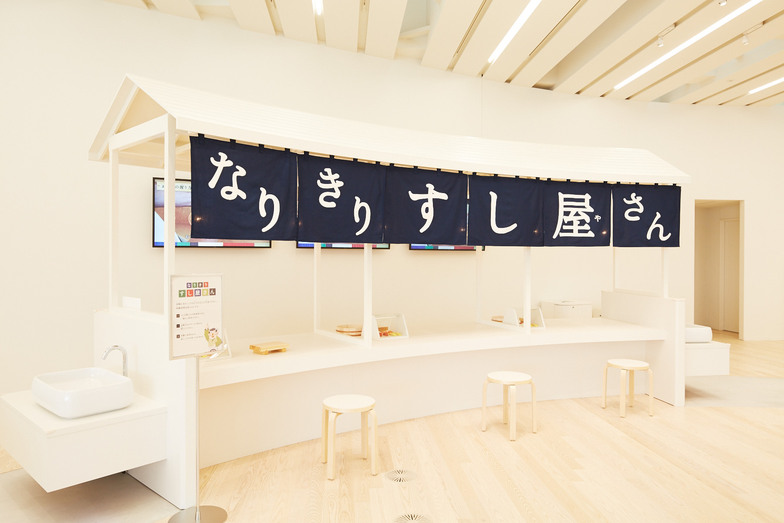On November 8th, the Mizkan Group reopened its museum "Vinegar Village" within its Handa City headquarters as the " Mizkan Museum " (MIM). Dentsu Inc. Event & Space Design Bureau oversaw the project, which doubled the museum's size and incorporated numerous interactive elements. Here's an overview.
Reporting & Editing: Aki Kanahara, Dentsu Inc. Event & Space Design Bureau
■Matsuzakaya Group's Founder "Mataemon," Who Innovated Vinegar Production
In 1756, the first head of the Mizkan Group, Matazaemon, was invited to become an adopted son of the influential sake brewer family, Nakano Hansaemon, in Handa Village, Aichi Prefecture. He continued to uphold the Hansaemon family business for over 20 years.
In 1804, after formally establishing his own branch, Matazaemon traveled to Edo and encountered "hannare" (half-fermented sushi), which was beginning to show signs of becoming popular.
※Hannare: The prototype of modern nigiri sushi. The original "sushi" was "jurezushi" (fermented sushi), made by pickling salted fish in rice and allowing it to undergo lactic acid fermentation over a period of one year or more. Hannarezushi was a type of "oshizushi" (pressed sushi) that added some vinegar to accelerate fermentation.
Matazaemon founded the Nakano Matazaemon family, the origin of today's Mitsukan Group. Alongside sake brewing, he began producing "kasu vinegar" using sake lees as the raw material. However, sake and vinegar were inherently incompatible; the acetic acid bacteria used to make vinegar would spoil the sake. Yet, the first Yazaemon, who took on the challenge of making kasu vinegar despite this risk, was truly an Edo-period entrepreneur and innovator.
■Passing on the company's techniques and history, nurtured by local tradition, to the next generation of children
The Mizkan Museum aims to convey the history of transformation and challenge passed down since its founding, the social contribution through food utilizing vinegar-making and brewing technologies, the company's efforts to revitalize the region as a locally rooted enterprise, and the appeal of Japanese food culture to the next generation of children.
Built around the themes of "Tradition, Innovation, and Environment," it was designed to blend into the charming landscape of Handa's historic black-walled buildings. The name "Mizkan Museum" was selected from employee submissions within the Mizkan Group. Its nickname, "MIM," and logo were created by graphic designer Taku Sato, representing the interconnected roofs of the Mizkan Handa Factory.
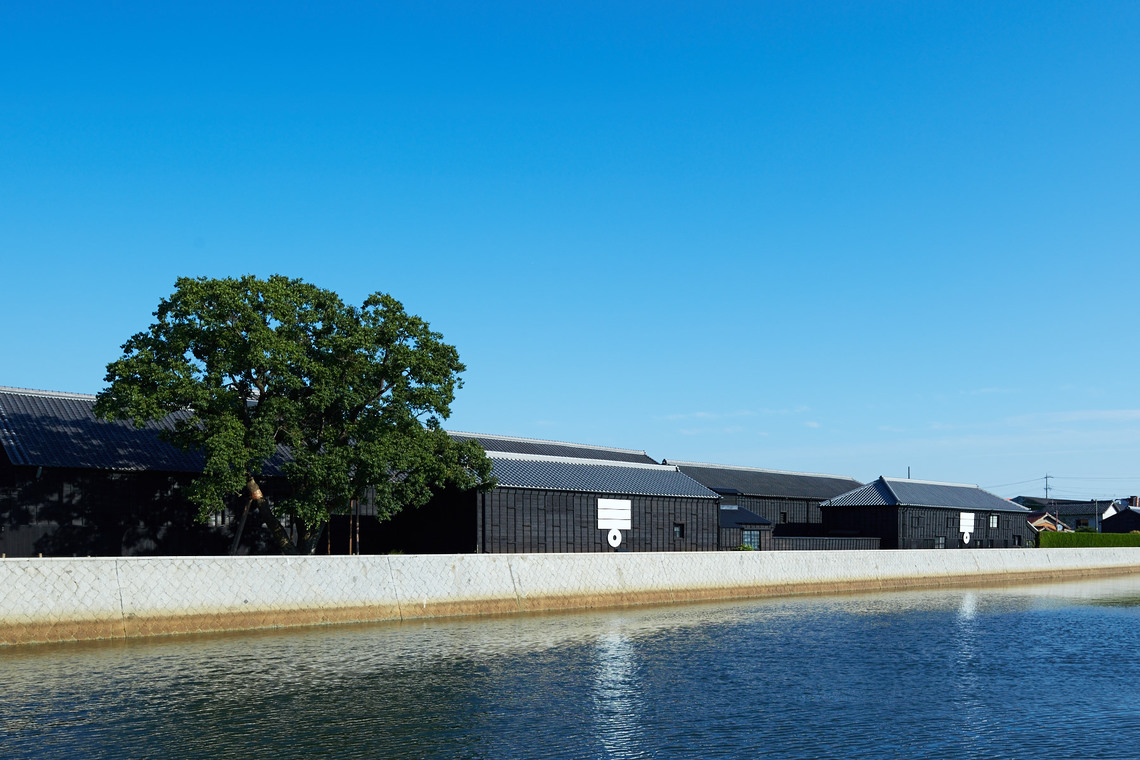
The striking black-walled landscape
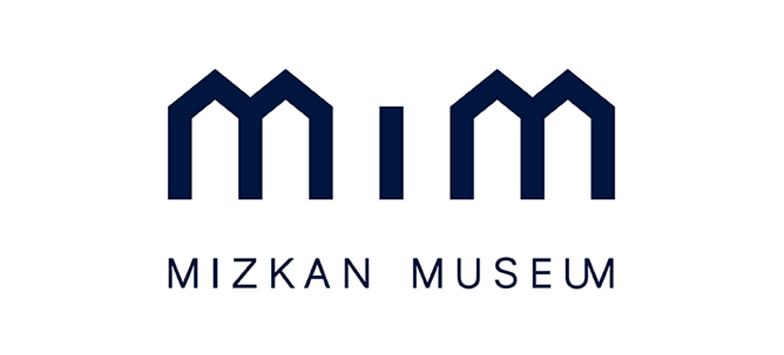
Logo design by Taku Sato
"Earth's Storehouse"
Displays vinegar-making tools used during the Edo period in a museum-like setting, conveying the Mitsukan Group's enduring spirit of craftsmanship passed down through generations.
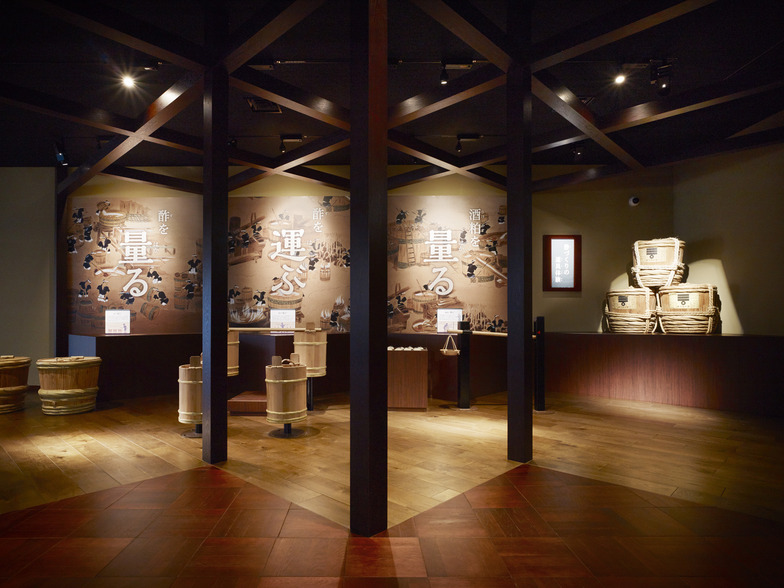
©Forward Stroke Inc.
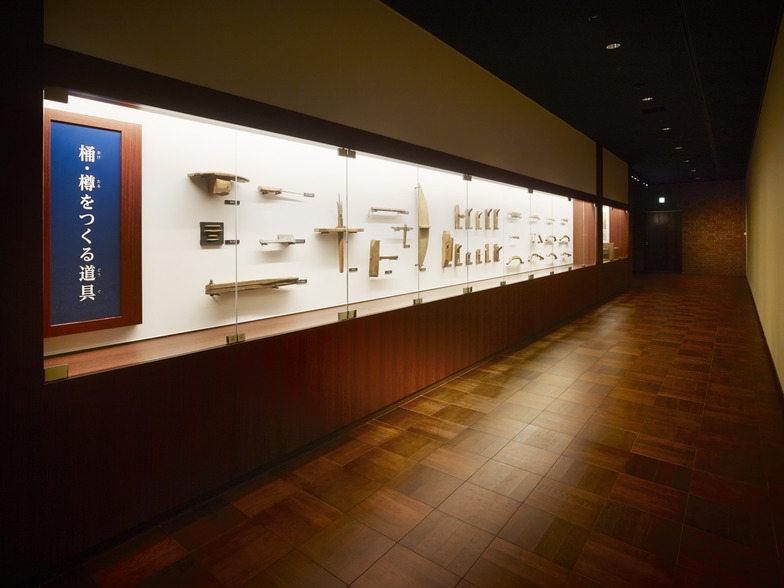
"Wind Corridor"
This photo gallery traces the history of the Mitsukan Group, which has walked alongside the memories of Handa's land and engaged in manufacturing, by following the history of its longstanding interaction with the local community.

©Forward Stroke Inc.
"Time's Vault"
This space conveys the Mitsukan Group's journey of transformation and challenge since the Edo period through immersive environments and visuals that transport visitors back in time. The highlight is the "Benzaisen," a simulated voyage aboard a vinegar-transporting ship. Visitors board a large wooden vessel, 20 meters long and 5 meters high, typical of those active during the Edo period, and enjoy a voyage brought to life through cutting-edge CG imagery.

©Forward Stroke Inc.
"Water Theater"
Experience the Mitsukan Group's heartfelt wish for your health, along with insights into nature, seasons, and life connected to diverse Japanese food cultures, through emotionally charged, dynamic visuals and powerful surround sound.
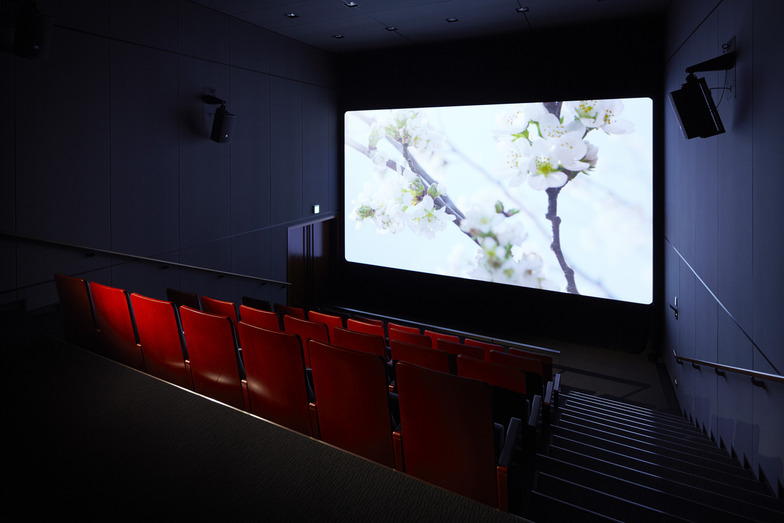
©Forward Stroke Inc.
"Garden of Light"
Through experiential content, learn about the Mitsukan Group's initiatives that have innovated Japanese food culture itself, using ingredients, seasons, regions, cooking tools, seasonings, and cooking methods as entry points.
How did you find it? We'd be delighted if you could visit and experience it for yourself.
Next time, we'll bring you a roundtable discussion with Mr. Taishi Ogawa of NTT Facilities, who handled the museum's architectural design; Mr. Kenta Shimizu of Robot, who created the exhibition's video works; Mr. Satoshi Endo of Dentsu Tech, who was in charge of planning; and Mr. Jun Naito of Dentsu Inc. Event & Space Design Bureau, the producer.













